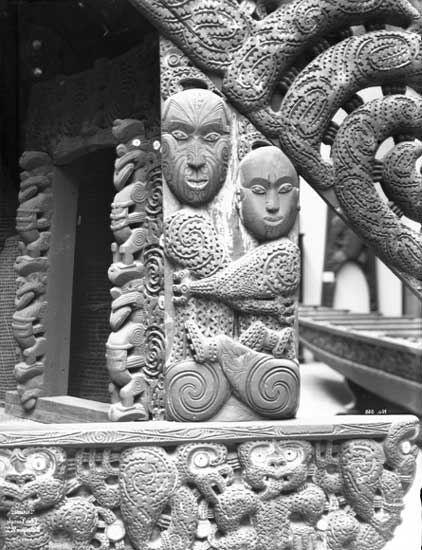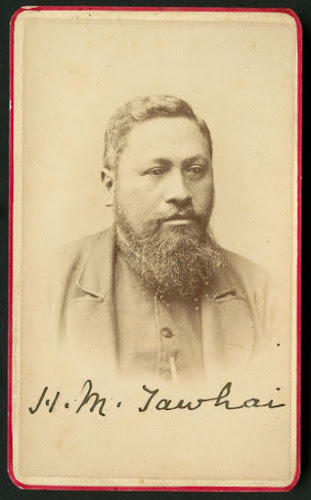Clashing Cultures - Abel Tasman's Bloody First Encounter with Māori
The first
encounter between Māori and Pākehā was characterised by what can only be
described as mutual incomprehension. Neither party had any prior awareness of
the other. They had no means of communicating with one another and no
understanding of each other’s cultural values. Like so many other first
contacts in the Pacific, the result was deadly, in this case especially so for the Europeans.
Whereas in the
sixteenth century it was the Spanish who dominated exploration of the Pacific,
in the 1600s it was the Dutch, who had established a base in Batavia (modern-day
Jakarta). It was from there that Abel Tasman led the two ships Zeehaen and the Heemskerck on a voyage of discovery in 1642. After charting the
coast of what is today known as Tasmania (initially named Van Diemen's Land), Tasman sailed on to the east, into
unknown waters, until on 13 December 1642 he sighted a ‘large, high-lying
island’. The Dutch had reached the west coast of the South Island. They sailed up
the coast and anchored in Golden Bay on the morning of 18 December.
Tasman and his men
had already seen fires lit along the coastline. But that evening two large waka
(canoes) came out to take a closer look at the newcomers. They issued a ritual challenge
to the strangers, blowing on a shell trumpet. Tasman, thinking this was some
kind of musical tribute or call of welcome, ordered his men to play some tunes
in response.
The next morning a
single waka with 13 men on board again approached the two ships. The men on
board called out to Tasman and his crew, probably warning them to leave the
district. But the Dutch were unable to understand a word of what was said to
them.
Tasman called the
officers of the two ships together, and, fatally misreading the situation,
decided to push on with plans to head towards the shores. He recorded that the
people of Golden Bay ‘apparently sought our friendship’.
 |
| Isaac Gilsemans, A View of the Murderers' Bay, 1642, PUBL-0086-021, ATL |
But the local iwi,
Ngāti Tumatakokiri, were actually preparing to kill the intruders and seven
waka set out from shore for these purposes, one of them paddling furiously in
the direction of a small boat returning to the Heemskerck from the Zeehaen after
the meeting of Tasman’s officers. Four of the Dutch were killed in this
exchange and Tasman’s crew opened fire, killing at least one man in
retaliation.
Tasman had finally
got the message that they were unwelcome, naming the spot Murderers Bay and
setting sail for the north. Their only further encounter with Māori was on
Three Kings Island, off the very north of the North Island. Here the Dutch
eventually abandoned an attempt to secure supplies of drinking water in the
face of threats from men brandishing clubs and spears.
Clearly the Dutch
had been spooked by their encounters with Māori and their descriptions of Māori
as a fierce and formidable people probably went some way to explaining why
there was no further contact with the outside world for the next 127 years.
From the Māori
perspective, the Dutch, with their massive sailing vessels, strange clothes,
absence of women and unfamiliar complexion, were clearly not like any normal
invader. It seems quite likely that they were regarded as supernatural, and
probably malignant, spirits, who had to be warded off in order to avoid dire
consequences for the local community. As discussed in The Meeting Place: Māori and Pākehā Encounters, 1642-1840, there is also some archaeological evidence to suggest that local Māori might have been seeking to protect an important area for the cultivation of crops and especially kūmara (sweet potato).
Either way, it was not an auspicious beginning to Māori and European encounters. The Dutch had arrived clutching a guide to Solomon Islands vocabulary. If (like some later travellers) they had come armed with a basic understanding of a language closely related to Māori such as Tahitian (or even, as with James Cook's first expedition to New Zealand in 1769, an actual Society Islander - in that case the high priest Tupaia) then the chances of avoiding conflict might have increased. Even then, however, there was no guarantee: Tupaia was unable to prevent further bloody clashes during the Endeavour's voyage around New Zealand.



Good content Vincent.
ReplyDeleteRegards,
Luis